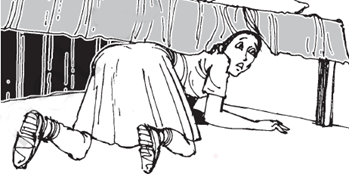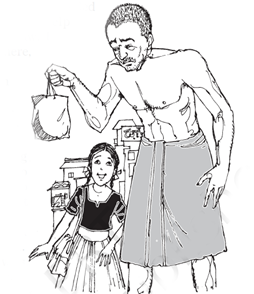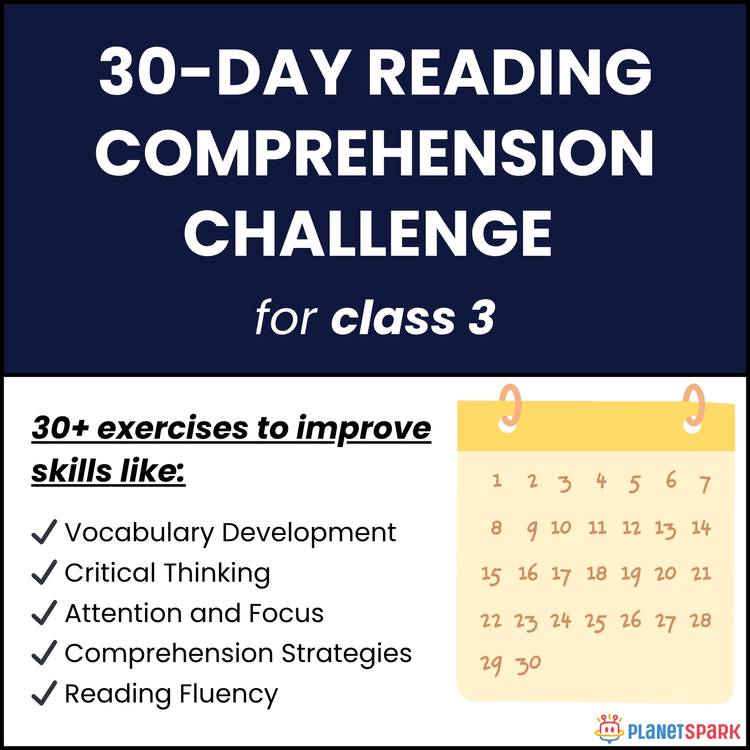Summary of Memory of Childhood for Class 12 | Themes, Q&A, and More!

Table of Contents
- Detailed Summary of Memory of Childhood
- Memories of Childhood Question Answer
- About the Authors - Summary of Memory of Childhood
- Symbolism in Memories of Childhood
- Theme of Memories of Childhood
- Character Sketch - Summary of Memory of Childhood
- Readers Also Read
- Conclusion - Summary of Memory of Childhood
- FAQs - Summary of Memory of Childhood
Childhood shapes the way we see the world and face its challenges. The summary of Memory of Childhood shares the early experiences of two remarkable women: Zitkala-Sa, a Native American, and Bama, a Tamil Dalit writer who faced discrimination and struggled against societal norms.
Through their memories of childhood, we see how courage, resilience, and learning helped them overcome hardships and grow into strong individuals. This blog also includes memories of childhood question answer, making it easier for Class 12 students to understand, revise, and excel in exams.
Detailed Summary of Memory of Childhood
I. Zitkala-Sa: The Cutting of My Long Hair
Zitkala-Sa, a Native American girl born in 1876, narrates her first experience at a boarding school far from her home. The school, part of the government’s attempt to “civilize” Native Americans, imposed strict rules and suppressed indigenous culture.
Her first day is terrifying. Snow covers the ground, the bell rings loudly, and the hall is filled with harsh noises. She notices other girls, but the environment feels alien and frightening. Zitkala-Sa is particularly disturbed when she learns that the school plans to cut her long hair. Among her people, long hair symbolizes strength and identity, and only cowards or captives had shingled hair.
Despite her fear, she initially tries to resist and hide. She crawls under a bed to avoid the paleface women who enforce the rules. But eventually, she is found, tied to a chair, and her long braid is cut off. The act leaves her feeling humiliated and powerless, marking the beginning of her struggle to retain her identity in a place designed to erase it.
This episode highlights the clash between personal identity and enforced conformity. Zitkala-Sa’s early memories show her courage, her pain at losing her cultural identity, and the injustices faced by Native American children in boarding schools.

Struggling with literature summaries? Join PlanetSpark Classes Today!
II. Bama: We Too Are Human Beings
Bama, a Tamil Dalit woman, recounts her childhood in a marginalized community where caste discrimination was a harsh reality. Unlike Zitkala-Sa, Bama’s experiences occur within her own society, but the prejudice is no less intense.
One day, Bama observes an elder of her street carrying a parcel of vadais (snacks) for an upper-caste landlord. Even though the food is safely wrapped, the elder must hold it at a distance and bow while handing it over. Bama is struck by the injustice and absurdity of this behavior. She realizes that people are humiliated and forced to act submissively because of caste-based discrimination.
Her elder brother, Annan, emphasizes the importance of education to overcome such indignities. He encourages her to study hard and excel in school so that she earns respect and dignity despite societal prejudice. Inspired by his words, Bama dedicates herself to learning, eventually standing first in her class. Through determination and education, she begins to break free from the limitations imposed by caste.
This story illustrates resilience and the pursuit of equality. Bama’s memories of childhood reflect how awareness, observation, and guidance from family members can empower children to challenge social injustice.

III. Key Points from Both Stories
Identity and Cultural Conflict: Both Zitkala-Sa and Bama face challenges to their cultural or personal identity. Zitkala-Sa’s hair-cutting symbolizes the loss imposed by colonial schooling, while Bama’s observations reveal caste-based humiliation.
Resilience in Adversity: Both women show courage in their childhood. Zitkala-Sa tries to hide and resist authority, and Bama resolves to excel in her studies despite societal barriers.
Role of Guidance: Support from peers or family plays a crucial role. Judewin warns Zitkala-Sa about the hair-cut, and Annan motivates Bama to pursue education as a path to dignity.
Awareness of Social Injustice: Both stories provide sharp observations of oppression, colonial assimilation in Zitkala-Sa’s case and caste discrimination in Bama’s story, teaching the importance of empathy and social awareness.
Childhood as a Formative Experience: The stories show that childhood experiences, even painful ones, shape one’s values, courage, and determination to fight injustice.
IV. Conclusion
Memory of Childhood presents powerful autobiographical episodes that highlight courage, resilience, and the struggle against social injustice. Zitkala-Sa and Bama show that even as children, individuals can recognize unfairness, resist oppression, and grow stronger through education, awareness, and determination. Their stories encourage young readers to understand history, appreciate cultural identity, and value equality.

Memories of Childhood Question Answer
1. The two accounts that you read above are based in two distant cultures. What is the commonality of theme found in both of them?
Both Zitkala-Sa and Bama belong to marginalized communities and face oppression from dominant social systems, colonial assimilation in Zitkala-Sa’s case and caste discrimination in Bama’s case. Despite being from different times and cultures, the common theme is the struggle against social injustice and the suppression of identity. Both narratives focus on childhood experiences of humiliation, resistance, and awareness of inequality, showing how early encounters with injustice shape courage, self-respect, and determination to fight oppression.
2. It may take a long time for oppression to be resisted, but the seeds of rebellion are sowed early in life. Do you agree that injustice in any form cannot escape being noticed even by children?
Yes, injustice is often noticed by children, even if they are too young to challenge it effectively. In Zitkala-Sa’s story, she immediately perceives the cruelty and humiliation of having her long hair cut, understanding its symbolic loss of identity and freedom. Similarly, Bama notices the caste-based humiliation when her elder delivers snacks for an upper-caste landlord, recognizing the unfairness and indignity involved. Both children react emotionally, feeling fear, anger, and a desire to resist, which shows that even young minds are sensitive to injustice. These early experiences often plant the seeds of rebellion, motivating them to resist or challenge oppression as they grow older.
3. Bama’s experience is that of a victim of the caste system. What kind of discrimination does Zitkala-Sa’s experience depict? What are their responses to their respective situations?
Zitkala-Sa’s discrimination: She faces cultural oppression and forced assimilation. The government-run boarding school aims to erase Native American identity, cutting her hair, imposing Western dress, and enforcing strict rules that strip away personal and cultural freedom.
Bama’s discrimination: She experiences caste-based discrimination, where her community is treated as inferior, expected to show subservience to upper-caste individuals, and denied dignity in everyday interactions.
Responses to oppression:
Zitkala-Sa initially resists by hiding under the bed, trying to avoid the authorities, showing immediate emotional resistance, though she ultimately faces the harsh reality.
Bama channels her anger into determined learning and academic excellence, following her brother’s advice, showing a strategic and long-term response to overcome social barriers.
Both responses highlight courage and resilience, illustrating that childhood experiences of oppression can cultivate awareness and a desire to challenge injustice in different ways.
About the Authors - Summary of Memory of Childhood
Zitkala-Sa (1876–1938), a Native American writer and activist, highlighted the struggles of forced assimilation and cultural loss through her works, while Bama (1958– ), a Tamil Dalit writer, portrayed the harsh realities of caste-based discrimination in India and emphasized education as a path to dignity and empowerment.
Get expert guidance on memories of childhood question answer
Schedule Your Free Demo!
Symbolism in Memories of Childhood
Cutting of Hair (Zitkala-Sa’s account)
Symbolizes the loss of identity, culture, and dignity of Native Americans under white domination.
Hair, which represented honor, bravery, and cultural pride, was forcibly cut, showing how indigenous children were stripped of their traditions.
The Vadai Packet (Bama’s account)
The packet carried by a Dalit elder at arm’s length symbolizes untouchability and caste-based humiliation.
It highlights how even simple acts, like delivering food, became reminders of inequality and oppression.
Education
In both accounts, education symbolizes resistance, empowerment, and hope.
While Zitkala-Sa resisted blind assimilation, Bama used learning as a tool to fight caste-based discrimination and assert dignity.
Childhood Innocence
Childhood in both narratives symbolizes the raw, unfiltered recognition of injustice. The young girls’ perspectives emphasize how even children can sense unfairness, planting the seeds of rebellion.
Theme of Memories of Childhood
Oppression and Discrimination
Both narratives explore how marginalized communities face social injustice, Zitkala-Sa as a Native American under colonial rules, and Bama as a Dalit in the caste system.
Loss of Identity and Cultural Struggle
The stories show the impact of forced assimilation (Zitkala-Sa’s hair cutting) and societal hierarchies (Bama’s vadai episode) on children’s sense of self and dignity.
Childhood Awareness and Resistance
Even as children, both authors recognize unfairness, showing that oppression is keenly felt from an early age. Their experiences reflect the beginning of inner resistance and the desire for equality.
Power of Education
Learning and knowledge emerge as tools of empowerment, helping children assert dignity and challenge societal norms.
Character Sketch - Summary of Memory of Childhood
Zitkala-Sa
Zitkala-Sa was a sensitive, strong-willed, and rebellious Native American girl who deeply valued her cultural identity. She resisted the forced assimilation imposed by the white authorities, showing courage and determination when her hair was cut against her will. Her character reflects resilience, cultural pride, and the pain of losing freedom and tradition.
Bama
Bama, a young Dalit girl, was observant, curious, and intelligent. She noticed the injustices of the caste system early in her life and initially responded with anger and sadness. However, guided by her brother’s advice, she turned her energy into education and hard work. Her character symbolizes awareness, self-respect, and the fight for equality.
Experience personalized learning for Class 12 students
Start with a Free Demo!
Analysis - Summary of Memory of Childhood
Memories of Childhood presents a vivid portrayal of childhood experiences shaped by social oppression and cultural conflict. Through autobiographical episodes, both Zitkala-Sa and Bama reflect on the struggles faced by marginalized communities.
Psychological Impact of Oppression
Zitkala-Sa’s experience at the Carlisle Indian School, especially the forcible cutting of her hair, highlights the trauma of cultural erasure. The strict rules and harsh treatment symbolize the larger colonial attempt to suppress Native American identity.
Bama’s encounters with caste-based discrimination, like the vadai incident, reveal the internalization of societal hierarchies and the humiliation faced by Dalit children.
Resistance and Resilience
Both authors demonstrate that children, even in oppressive environments, retain a sense of self and justice. Zitkala-Sa attempts to resist by hiding, while Bama channels her anger into determination to excel academically.
Cultural and Social Commentary
Zitkala-Sa critiques the assimilationist policies of American Indian schools, exposing the clash between Western norms and Native traditions.
Bama critiques the caste system, highlighting how social customs strip marginalized communities of dignity, yet also showing how education and awareness can empower them to challenge injustice.
Universal Childhood Experience vs. Oppression
Both narratives underline that while children are naturally curious and playful, oppression intrudes early, shaping their worldview. Their memories of fear, confusion, and eventual empowerment provide insight into how social structures affect personal growth.
Readers Also Read
The Tiger King – A satirical tale about pride, fate, and human folly as a king hunts 100 tigers, ignoring a prophecy.
Keeping Quiet – Pablo Neruda’s poem urging silence and introspection to understand oneself and the world.
Poets and Pancakes – A humorous look at life in Gemini Studios, exploring creativity, identity, and work.
My Mother at Sixty-Six – Kamala Das reflects on her mother’s aging, highlighting love, loss, and the passage of time.
Lost Spring – Stories of underprivileged children deprived of childhood, exploring poverty and social injustice.

Why Choose PlanetSpark for Exploring Childhood Memories
Understanding stories like Memories of Childhood helps students not only improve their comprehension but also develop empathy, critical thinking, and cultural awareness. At PlanetSpark, we make learning such literary works engaging and meaningful for Class 12 students.
✔️ Personalized Learning: Our online classes focus on tailoring lessons according to each student’s reading and analytical skills. This ensures that every learner can fully grasp complex themes, symbolism, and character motivations.
✔️ Interactive Discussions: Students participate in guided discussions, debates, and Q&A sessions to explore autobiographical narratives deeply, helping them connect personal experiences with literary insights.
✔️ Exam-Ready Preparation: Our curriculum aligns with board requirements, offering practice questions, detailed summaries, and answers, so students can confidently tackle questions on memories of childhood question answer and related topics.
✔️ Holistic Skill Development: Beyond literature, PlanetSpark classes enhance writing, presentation, and critical thinking skills, preparing students to express themselves effectively both in exams and in life.
With PlanetSpark, learning about childhood memories becomes a journey of discovery, reflection, and academic excellence.
Conclusion - Summary of Memory of Childhood
The autobiographical accounts of Zitkala-Sa and Bama in Memories of Childhood offer students a window into the lives of children growing up under oppression in two very different cultures. Both stories highlight how early experiences shape awareness, resilience, and a sense of identity. While Zitkala-Sa faces cultural suppression in a Native American school, Bama confronts caste-based discrimination in her community. Despite their struggles, both women rise above the injustices around them, teaching us that courage, determination, and education can help overcome societal limitations.
For Class 12 students, reflecting on these narratives not only strengthens comprehension skills but also encourages empathy, critical thinking, and the ability to answer questions on memories of childhood with clarity and depth.
FAQs - Summary of Memory of Childhood
1. What is the main theme of Memories of Childhood?
The main theme is the struggle against oppression and the formation of identity in childhood, showing how early experiences influence resilience and awareness of social injustices.
2. Who are the two authors featured in the text?
The two authors are Zitkala-Sa, a Native American woman who fought cultural suppression, and Bama, a Tamil Dalit writer who faced caste-based discrimination.
3. How do Zitkala-Sa and Bama respond to oppression?
Both authors respond differently: Zitkala-Sa resists the loss of cultural identity in a boarding school, while Bama strives for education and dignity, ultimately rising above societal prejudices.
4. Why is understanding childhood memories important for students?
Childhood memories reveal formative experiences, teach empathy, and provide insights into historical and social contexts, helping students analyze literature critically.
5. Can these stories help in exam preparation?
Yes, reading and understanding these narratives prepares students for questions on summary of memory of childhood and memories of childhood question answer, improving comprehension and analytical skills.
Download Free Worksheets
Personalized Communication Report
Record a video to get a AI generated personalized communication report for your child

Hi There, want to try these
tips for your child with
LIVE with our expert coach?
Let's check your child's
English fluency

